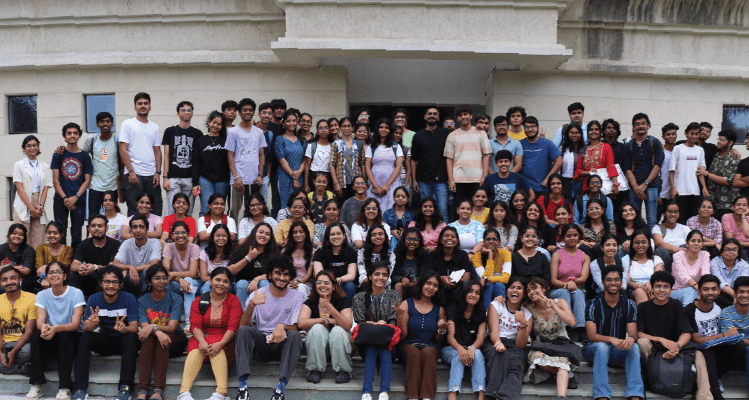Design has now become a conventional and reliable career choice. Long gone are the days when any design-related profession was considered uncertain for people to choose and pursue. Design as a skill has very far-reaching utilization, potential, though the design education offered hasn’t evolved much over the years as compared to business or science education that has made giant strides.
Misconception 1: Design is only for the artistic typesReality: Design is undoubtedly and essentially for everyone. Until the last decade, the features of any product were the most crucial distinguishing element. But since technology has become universally accessible the distinguishing element is out of the equation. For example, if we talk about mobile phones, almost all mobile phones had the same basic features. To catch the eye in the market, manufacturers started to target the look and feel of their products. This does not only apply to the visual elements of the mobile phone, but also the experience it offers. User interface (UI) and user experience (UX) have become the distinguishing element while the product design stands out. So, the technical team and the design team must work in coordination to create a device that catches the eye of the customer.
Customer behavior has matured with time and it has become the defining aspect for any industry to thrive in the market. These days the consumer behavior is more inclined towards experience-based and hence brands create tactile experiences for their customers which happen digitally or in person.
Misconception 2: Design is a mere supplementReality: Design has an impact on almost every aspect of human life, even the most ordinary tasks. The customer wants not just performance from every product and service they use, but practical and working designs that are worth investing time and money in. The expansion in e-commerce implies that design thinking must be included at every phase of a business, right from brainstorming to manufacturing, retailing to delivery. Additionally, design thinking has become very crucial to sustainable development and environmental awareness in any business.
The gaming business is another domain where design is now the focus of interest. As smart devices have become pervasive, and with access to the internet now more pocket-friendly, online gaming has escalated in India. According to reports, India has more than 300 million active gamers while the mobile gaming market clocked revenues of $1.5 billion in 2020, which is estimated to touch $5 billion by 2025. Technology has made gaming evolution a comparatively smooth and profitable career at the same time, most importantly leading to an abundance of games. Unfortunately, many games offer a poor experience and are not very appealing and worth the experience. The solution to this problem is better yet improved UI, UX, and improved training in game design.
Unsurprisingly, games are no longer limited just to computers, consoles, and smartphones. The fields of finance, education, and many other similar fields are implementing gamification tools to make their user experience pleasing and smooth. For completing quizzes and other activities on educational applications, these kinds of fascinating and attractive experiences for the end-users needs competent product designers as well as a software developer and proficient content writers.
With the proposed increment in the adoption of immersive technology, VR (virtual reality), AR (augmented reality), and VFX (visual effects) in multiple applications, the contribution of visual designers are expected to rise substantially.
Misconception 3: No qualifications are required to become a skillful designer, only creativityReality: The days are far from over where any individual with efficient creative perception could pursue to become a designer. Design is not just about making something presentable like the earlier days. These days design is about being solution-oriented, practical, and innovative other than just being presentable. These are some of the techniques companies use to crack the muddle in the market.
Hence, there is a comparatively higher demand for designers who are familiar with the market needs and customer requirements while having a complete education and practical exposure in all the facets of design. Now, when so much depends on the visual presentation of a market and the experimental expectations of the end-user, there’s a great demand for well-versed designers and not just design prompters who can sketch well.
Misconception 4: No good institutes in India providing quality design educationReality: Many esteemed institutes have surfaced in India including top B.Des Colleges in Madhya Pradesh in the last decade, that offer undergraduate and post-graduate programs across the user interface, user experience, communication design, product design, game design, digital communication, and visual communication. These institutes have outstanding faculty, many with comprehensive experience in the industry. These institutes have also promoted industry connections to offer students a practical education that blends academic precision with practical learning via internships. Many such institutes have tie-ups with primary design schools outside the country and have set up new age curriculum that develops a flexible mindset and promotes innovation.
Over the next decade, design as a profession and design education will be improved, better organized, and all the way more decisive top design colleges in India. There are also prominent options to study design at both Bachelor and Master of Design colleges in Indore. There will be numerous job openings for aspirants who are well versed with modern methodologies. While the engineering part may be dominated by robotics, machine learning, artificial intelligence, and other technologies in the future, design thinking and aesthetics will always be an exclusively human feature.
